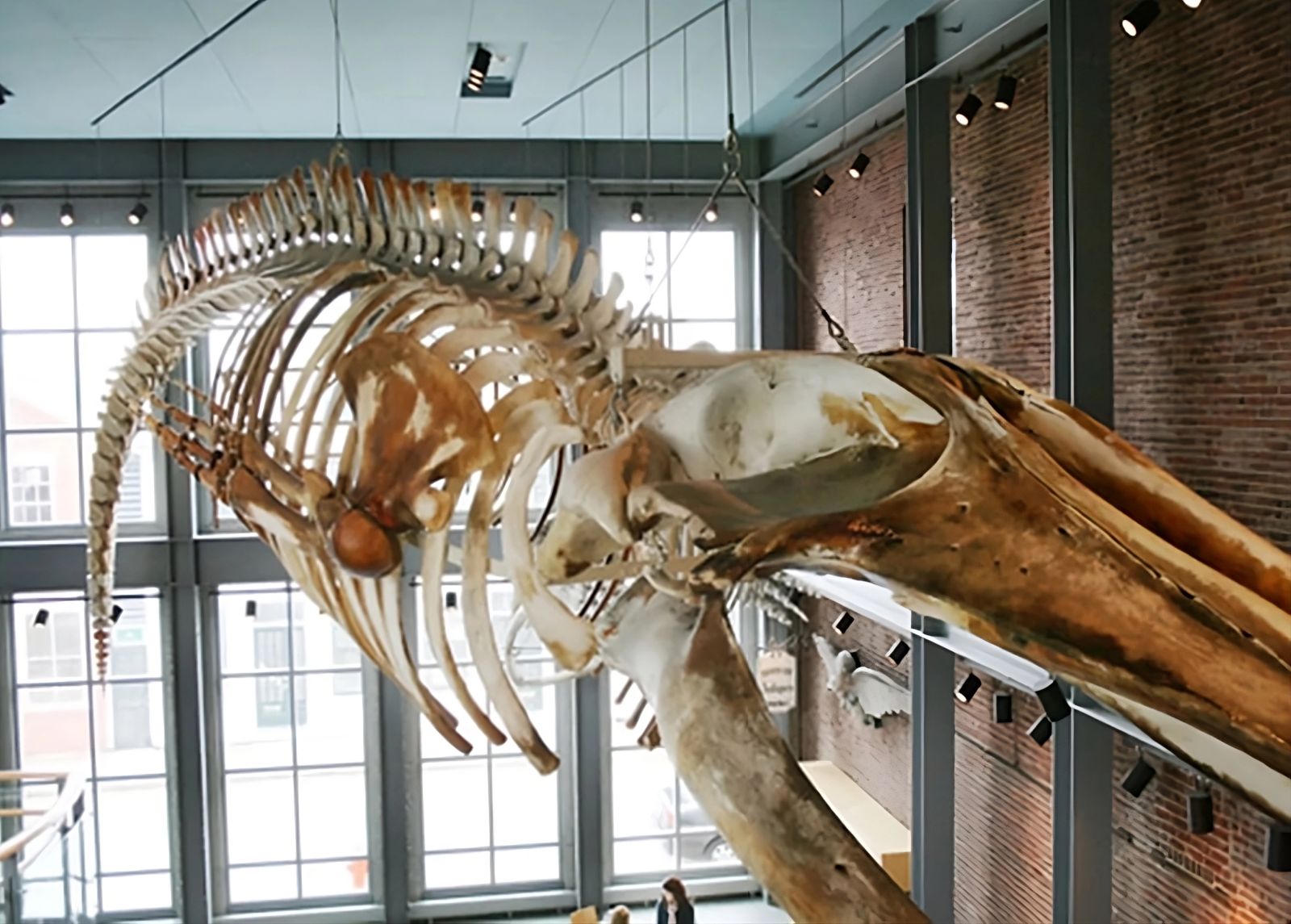Unusual: 26 years after its death, oil continues to leak from this whale's skeleton 🐋
Published by Cédric,
Article author: Cédric DEPOND
Source: Popular Science
Other Languages: FR, DE, ES, PT
Article author: Cédric DEPOND
Source: Popular Science
Other Languages: FR, DE, ES, PT
Follow us on Google News (click on ☆)
KOBO's skeleton is displayed at the New Bedford Whaling Museum, in the United States. Discovered under dramatic circumstances, this animal crossed paths with a tanker, which cost it its life. KOBO's tragic accident raises questions about the dangers these giants of the seas face.

Photo New Bedford Whaling Museum
The blue whale is one of the largest animals on Earth, measuring up to 79 feet (24 meters) and weighing up to 330,000 pounds (150 tonnes). However, this species is endangered, with a global population that has plummeted from 125,000 to about 3,000 individuals in less than a century. Intense whaling over past decades played a key role in this decline.
But let's return to KOBO. The cleaning of its body took five months. After its death, its bones were submerged in the waters of New Bedford's harbor to remove the remaining organic tissue. A meticulous process, but one that didn't result in the complete extraction of oil from its bones.
Thus, KOBO continues to produce oil, a fascinating phenomenon for visitors. This substance, which slowly leaks out, reminds researchers of the importance of oil for living whales, serving as thermal insulation and an energy source. Devices have been installed to collect this oil, to prevent inconvenience for visitors. However, this oil leakage also allows us to imagine the living conditions aboard the whaling ships of yesteryear.
Whale oil historically had many applications, from lubrication to lighting. In the 19th century, it was so sought after that it was even used for making explosives during the World Wars. This historical context further enriches KOBO's story.
Today, KOBO's skeleton continues to fascinate both scientists and enthusiasts. Despite its death, its legacy endures, highlighting the challenges of marine species conservation. KOBO is not merely a skeleton; it is a living symbol of the fight to protect the oceans.